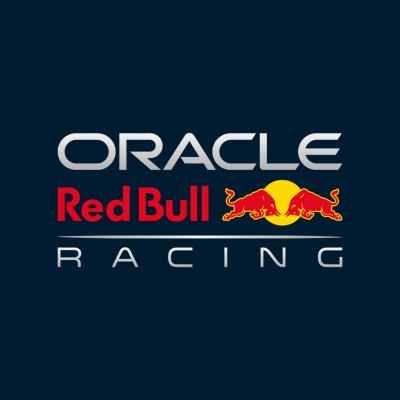McLaren's Moment: A New Era in Formula One** **
July 26, 2024, 8:27 am

Location: United Kingdom, England, Bow Brickhill
Employees: 10001+
Founded date: 2005
**
The Hungarian Grand Prix was a stage set for drama, and it delivered. McLaren emerged from the shadows, claiming a stunning one-two finish. Oscar Piastri, a rookie with a hunger for victory, crossed the line first. Lando Norris, his teammate, followed closely behind. This race was more than just a competition; it was a turning point for McLaren and a testament to teamwork.
Norris, a talented driver, found himself in a tug-of-war with team orders. He led the race but faced pressure to yield to Piastri. The tension was palpable. Fans held their breath as Norris wrestled with the decision. In the end, he complied, allowing Piastri to bask in the glory of his first win. It was a moment of humility, a reminder that in racing, the team often outweighs the individual.
Piastri's victory was historic. He became the first driver born in the 21st century to win a Formula One race. The significance of this achievement cannot be overstated. It marks a new generation of drivers, ready to challenge the old guard. McLaren's one-two finish also propelled them to second place in the Constructors' Championship. This resurgence is a testament to their hard work and determination.
Andrea Stella, McLaren's team principal, stood firm in his belief in Norris. He never doubted the Briton's commitment to the team. The relationship between driver and team is crucial in Formula One. Trust is the oil that keeps the engine running smoothly. Stella's confidence in Norris was well-placed. The Briton ultimately put the team first, showcasing the spirit of collaboration that defines successful teams.
Meanwhile, Max Verstappen, the reigning champion, faced a different reality. His hopes for a third consecutive win in Hungary crumbled after a collision with Lewis Hamilton. The Red Bull driver finished fifth, a stark contrast to his usual dominance. This race highlighted the shifting dynamics in Formula One. Red Bull, once untouchable, now finds itself in a battle for supremacy. The competition is fierce, and the landscape is changing.
Verstappen's frustration was evident. He acknowledged that Red Bull could no longer rely solely on their pace advantage. The team must adapt and improve. The pressure is mounting. As the season progresses, every race becomes a crucial battleground. The stakes are high, and the margin for error is razor-thin.
The Hungarian Grand Prix also marked a significant milestone for Hamilton. He celebrated his 200th podium finish, a record that speaks volumes about his longevity and skill. Yet, the race also served as a reminder of the fierce competition he faces. The new generation of drivers, like Piastri and Norris, are not just chasing dreams; they are rewriting the narrative of Formula One.
As the teams prepare for the Belgian Grand Prix, the excitement is palpable. The summer break looms, but the battles on the track will only intensify. Teams will analyze data, strategize, and refine their approaches. The quest for victory is relentless. Each driver will push their limits, striving for that elusive checkered flag.
In the midst of this competitive frenzy, the story of McLaren stands out. Their resurgence is a beacon of hope for fans and a warning to rivals. The team has faced challenges, but they have emerged stronger. The chemistry between Norris and Piastri is electric. Together, they form a formidable duo, ready to take on the world.
Piastri's celebration was a departure from tradition. Unlike his predecessor, Daniel Ricciardo, he opted for a more subdued approach. No shoey for this Australian. Instead, he embraced the moment with grace. This choice reflects a new era in Formula One, where drivers are carving their own identities.
The statistics from the Hungarian Grand Prix paint a vivid picture. McLaren's 49th one-two finish is a testament to their legacy. The season has seen a remarkable diversity of winners, with seven different drivers claiming victory. This unpredictability adds to the allure of Formula One. Fans are treated to a spectacle where anything can happen.
As the Belgian Grand Prix approaches, the anticipation builds. Teams will analyze their performances, seeking to gain an edge. The battle for the championship is far from over. Each race is a chapter in a larger story, one filled with triumphs, setbacks, and unforgettable moments.
In conclusion, the Hungarian Grand Prix was a turning point for McLaren and a reminder of the ever-evolving nature of Formula One. Piastri's victory symbolizes hope and new beginnings. Norris's willingness to support his teammate showcases the essence of teamwork. As the season unfolds, the competition will only grow fiercer. The world of Formula One is alive with possibilities, and the next race promises to be another thrilling chapter in this high-speed saga.
The Hungarian Grand Prix was a stage set for drama, and it delivered. McLaren emerged from the shadows, claiming a stunning one-two finish. Oscar Piastri, a rookie with a hunger for victory, crossed the line first. Lando Norris, his teammate, followed closely behind. This race was more than just a competition; it was a turning point for McLaren and a testament to teamwork.
Norris, a talented driver, found himself in a tug-of-war with team orders. He led the race but faced pressure to yield to Piastri. The tension was palpable. Fans held their breath as Norris wrestled with the decision. In the end, he complied, allowing Piastri to bask in the glory of his first win. It was a moment of humility, a reminder that in racing, the team often outweighs the individual.
Piastri's victory was historic. He became the first driver born in the 21st century to win a Formula One race. The significance of this achievement cannot be overstated. It marks a new generation of drivers, ready to challenge the old guard. McLaren's one-two finish also propelled them to second place in the Constructors' Championship. This resurgence is a testament to their hard work and determination.
Andrea Stella, McLaren's team principal, stood firm in his belief in Norris. He never doubted the Briton's commitment to the team. The relationship between driver and team is crucial in Formula One. Trust is the oil that keeps the engine running smoothly. Stella's confidence in Norris was well-placed. The Briton ultimately put the team first, showcasing the spirit of collaboration that defines successful teams.
Meanwhile, Max Verstappen, the reigning champion, faced a different reality. His hopes for a third consecutive win in Hungary crumbled after a collision with Lewis Hamilton. The Red Bull driver finished fifth, a stark contrast to his usual dominance. This race highlighted the shifting dynamics in Formula One. Red Bull, once untouchable, now finds itself in a battle for supremacy. The competition is fierce, and the landscape is changing.
Verstappen's frustration was evident. He acknowledged that Red Bull could no longer rely solely on their pace advantage. The team must adapt and improve. The pressure is mounting. As the season progresses, every race becomes a crucial battleground. The stakes are high, and the margin for error is razor-thin.
The Hungarian Grand Prix also marked a significant milestone for Hamilton. He celebrated his 200th podium finish, a record that speaks volumes about his longevity and skill. Yet, the race also served as a reminder of the fierce competition he faces. The new generation of drivers, like Piastri and Norris, are not just chasing dreams; they are rewriting the narrative of Formula One.
As the teams prepare for the Belgian Grand Prix, the excitement is palpable. The summer break looms, but the battles on the track will only intensify. Teams will analyze data, strategize, and refine their approaches. The quest for victory is relentless. Each driver will push their limits, striving for that elusive checkered flag.
In the midst of this competitive frenzy, the story of McLaren stands out. Their resurgence is a beacon of hope for fans and a warning to rivals. The team has faced challenges, but they have emerged stronger. The chemistry between Norris and Piastri is electric. Together, they form a formidable duo, ready to take on the world.
Piastri's celebration was a departure from tradition. Unlike his predecessor, Daniel Ricciardo, he opted for a more subdued approach. No shoey for this Australian. Instead, he embraced the moment with grace. This choice reflects a new era in Formula One, where drivers are carving their own identities.
The statistics from the Hungarian Grand Prix paint a vivid picture. McLaren's 49th one-two finish is a testament to their legacy. The season has seen a remarkable diversity of winners, with seven different drivers claiming victory. This unpredictability adds to the allure of Formula One. Fans are treated to a spectacle where anything can happen.
As the Belgian Grand Prix approaches, the anticipation builds. Teams will analyze their performances, seeking to gain an edge. The battle for the championship is far from over. Each race is a chapter in a larger story, one filled with triumphs, setbacks, and unforgettable moments.
In conclusion, the Hungarian Grand Prix was a turning point for McLaren and a reminder of the ever-evolving nature of Formula One. Piastri's victory symbolizes hope and new beginnings. Norris's willingness to support his teammate showcases the essence of teamwork. As the season unfolds, the competition will only grow fiercer. The world of Formula One is alive with possibilities, and the next race promises to be another thrilling chapter in this high-speed saga.

